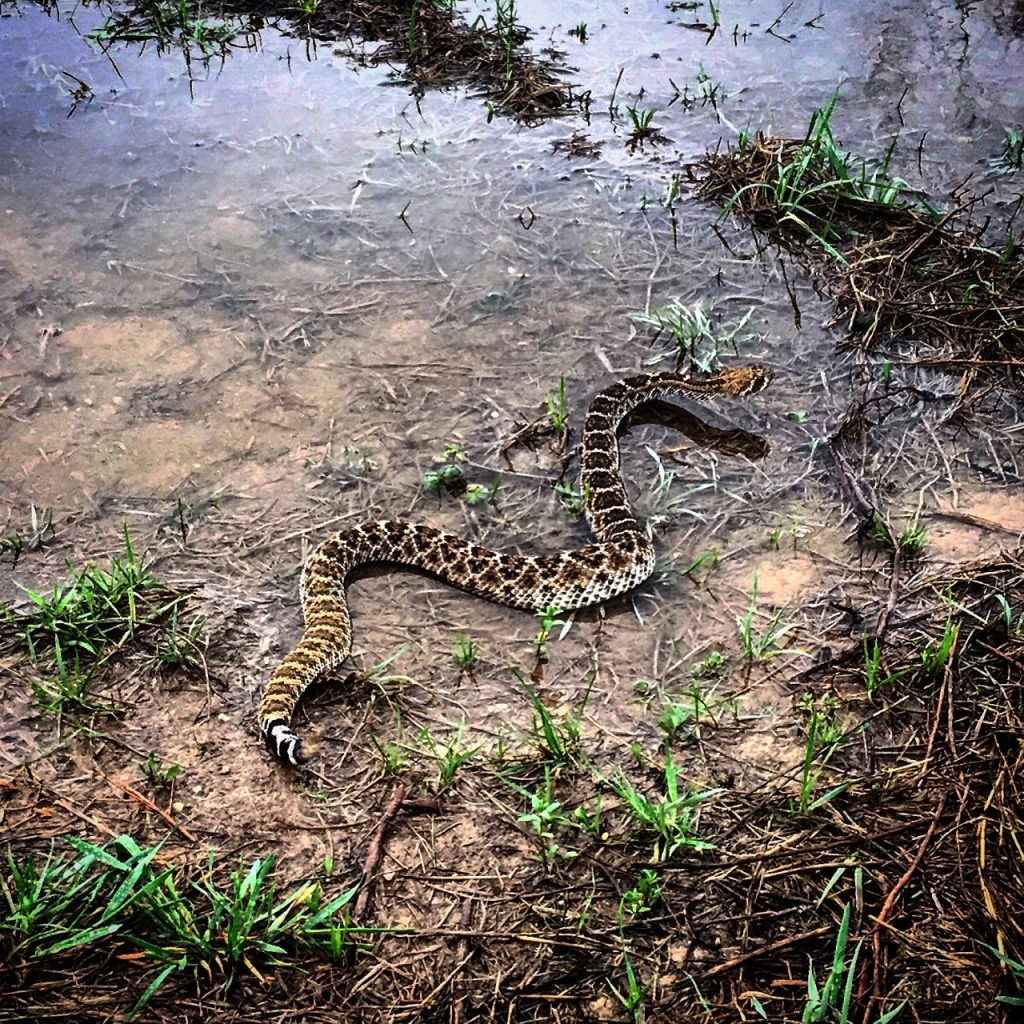
A slithery snake is the last thing you want to see in your home. But as a couple pulled up to their home in Houston, their headlights illuminated a black serpent climbing its way up the side of their house.
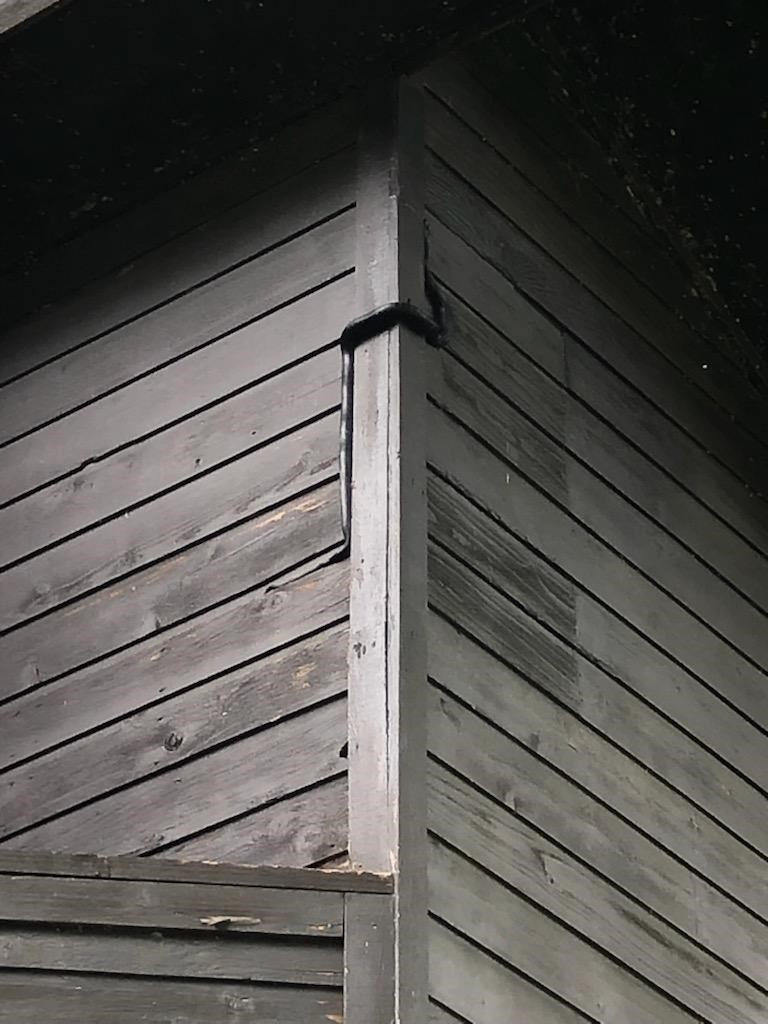
From there, it disappeared into a woodpecker hole.
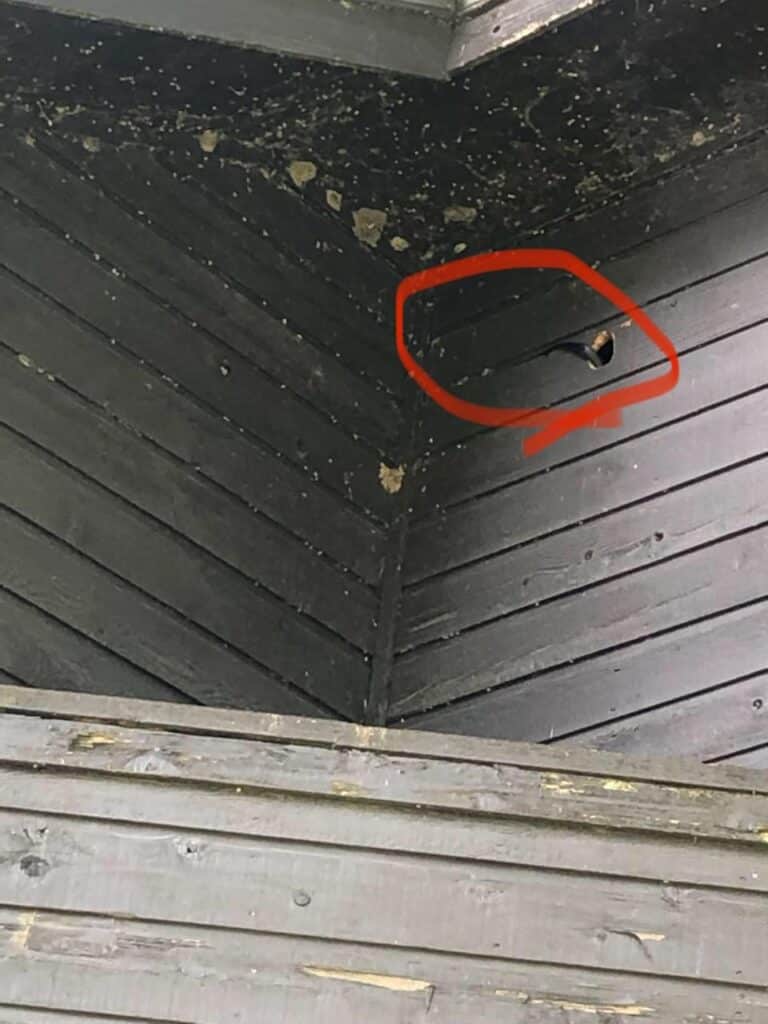
That was definitely a shock! Instead of panicking, these savvy homeowners called Critter Control.
Types of Snakes in Texas
After the technician arrived, their first order of business was to try to determine what kind of snake they had on their hands. In southeast Texas, there are 39 snake species that it could be.
Importantly, the technician wanted to discover if it was a venomous snake or not. The seven possible venomous snakes include Southern Copperheads, Western Cottonmouths, Timber rattlesnakes, Western Diamondback rattlesnakes, Western Pygmy rattlesnakes, Dessert Massasauga, or the Texas Coral snake.
The technician was fairly confident that it was not a venomous snake based on the homeowners’ description of a black snake. Most of the venomous snakes in Texas have relatively colorful patterns. Although the description of a black snake could point to a cottonmouth, the home was several miles away from any ponds or lakes.
Why Do Snakes Get in Your Home?
With confidence that the snake was not venomous, the technician investigated the hole on the side of the house. He determined that the hole led into the attic, so he climbed into the attic to search for the snake.
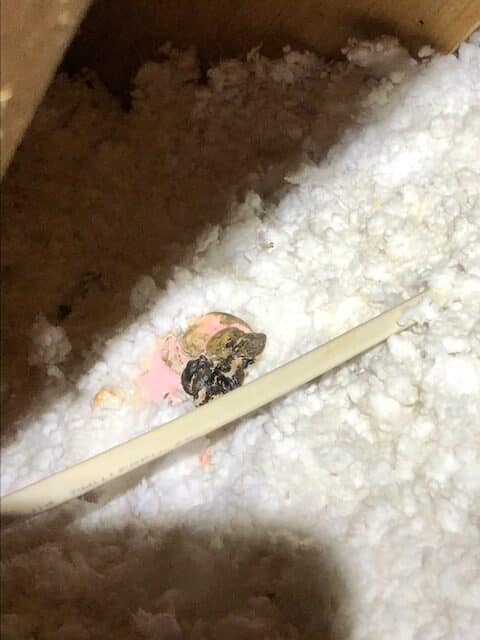
Snake droppings greeted him to confirm that a snake was indeed using the attic regularly.
The reasons why this particular snake was in the attic could vary. In many cases, snakes will wiggle into an attic on the hunt for a food source. If there are rodents in an attic, that is a sure attractant for snakes. Luckily for these homeowners, the technician found no evidence of rodents. However, given the sweltering heat of a Texas summer, it is possible that the snake was seeking shelter.
How Snakes Get in Your Home
Snakes can worm their way into small spaces and squeeze into your home. Disconcertingly, snakes can climb. With that, they can scale the side of your house looking for an opening.
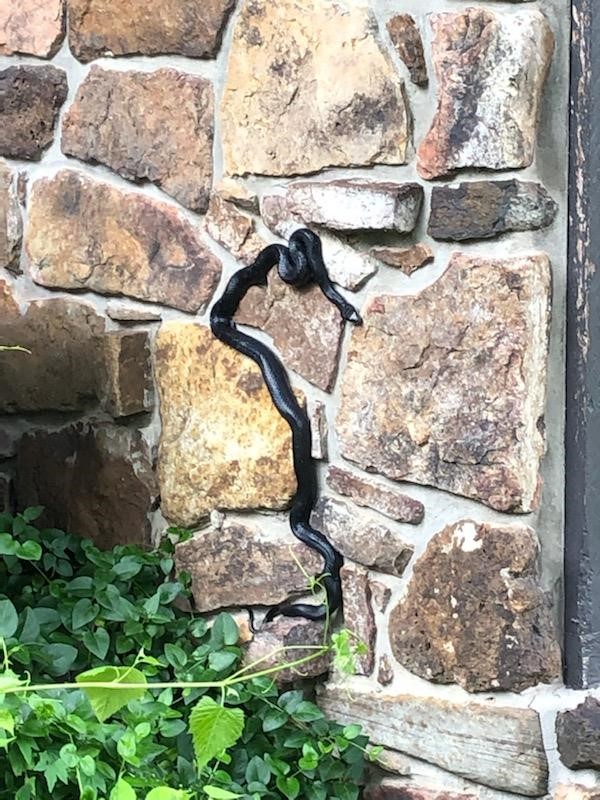
How Can Snakes Be Controlled: Exclusion and Traps
Snakes are excellent at avoiding detection. In Houston, our technician searched the attic for signs of a present snake. After ensuring that the attic was snake-free, they sealed all of the openings on the side of the house.
Exclusion is the most effective way to eliminate a snake presence in your home. But it can be more difficult to exclude snakes from your property. However, a specialized snake-proof fence or boundary of lava rocks could prevent snakes from becoming regular visitors.
Since the snake was not deemed a threat, the homeowners decided that traps were not necessary. If the snake had been venomous, the homeowners may have pursued trapping methods that would ensure the snake was removed from their property permanently.
Rodent Control to Keep Snakes Out
The best way to keep snakes out is to eliminate the reasons they enter. Snakes are ambush hunters, so they need to hide where their prey is active. Effective rodent control plus exclusion will protect your home from snakes and rodents!
Critter Control’s Integrated Approach to Rat and Mouse Control
- Inspection: An expert at Critter Control will thoroughly inspect the property to identify areas of rat activity, entry points, and nesting sites.
- Identification: Different species of rodents require different control methods. Common rats in Florida include roof rats and Norway rats. Identifying the species helps in selecting the most appropriate control methods.
- Exclusion: Sealing off entry points and blocking access to the property is crucial to prevent rats from entering or re-entering the premises. This may involve sealing wall gaps, installing door sweeps, and repairing damaged vents or screens.
- Sanitation: Removing potential food and water sources, such as garbage, spilled food, and standing water, helps make the environment less attractive to rats.
- Extermination: Rat traps are strategically placed to capture rats already present in the property. Different types of traps, including snap traps and humane traps, may be used depending on the situation.
- Baiting: Rodenticides (rat poisons) may be used as part of the control strategy. At Critter Control, we use tamper-resistant bait stations placed in areas frequented by rats. Extreme caution is necessary when using rodenticides, especially in residential areas with pets or children.
- Monitoring and Follow-up: Regular monitoring of the property is important to assess the effectiveness of control measures and to identify any new rat activity. Follow-up treatments may be necessary to ensure complete elimination of the infestation.
- Preventive Measures: Providing recommendations to the homeowner on preventive measures, such as maintaining cleanliness, proper storage of food, and regular property maintenance, helps reduce the risk of future rat infestations.